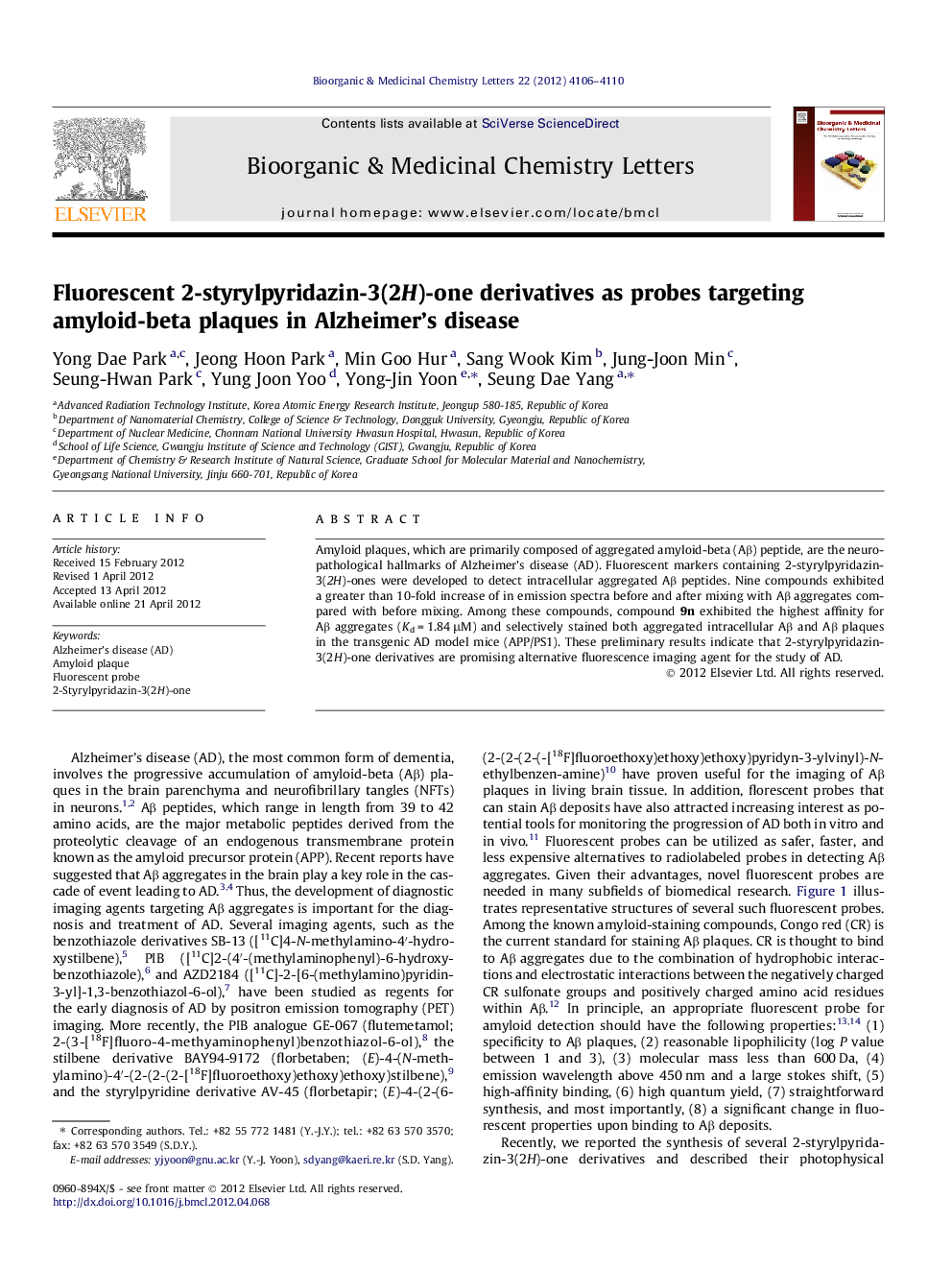| Article ID | Journal | Published Year | Pages | File Type |
|---|---|---|---|---|
| 10588411 | Bioorganic & Medicinal Chemistry Letters | 2012 | 5 Pages |
Abstract
Amyloid plaques, which are primarily composed of aggregated amyloid-beta (Aβ) peptide, are the neuropathological hallmarks of Alzheimer's disease (AD). Fluorescent markers containing 2-styrylpyridazin-3(2H)-ones were developed to detect intracellular aggregated Aβ peptides. Nine compounds exhibited a greater than 10-fold increase of in emission spectra before and after mixing with Aβ aggregates compared with before mixing. Among these compounds, compound 9n exhibited the highest affinity for Aβ aggregates (Kd = 1.84 μM) and selectively stained both aggregated intracellular Aβ and Aβ plaques in the transgenic AD model mice (APP/PS1). These preliminary results indicate that 2-styrylpyridazin-3(2H)-one derivatives are promising alternative fluorescence imaging agent for the study of AD.
Related Topics
Physical Sciences and Engineering
Chemistry
Organic Chemistry
Authors
Yong Dae Park, Jeong Hoon Park, Min Goo Hur, Sang Wook Kim, Jung-Joon Min, Seung-Hwan Park, Yung Joon Yoo, Yong-Jin Yoon, Seung Dae Yang,
